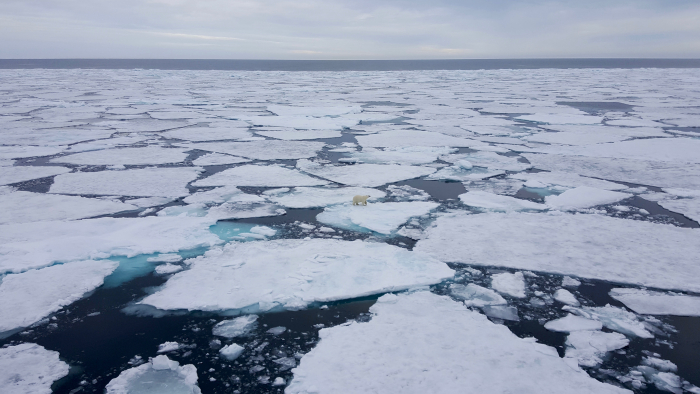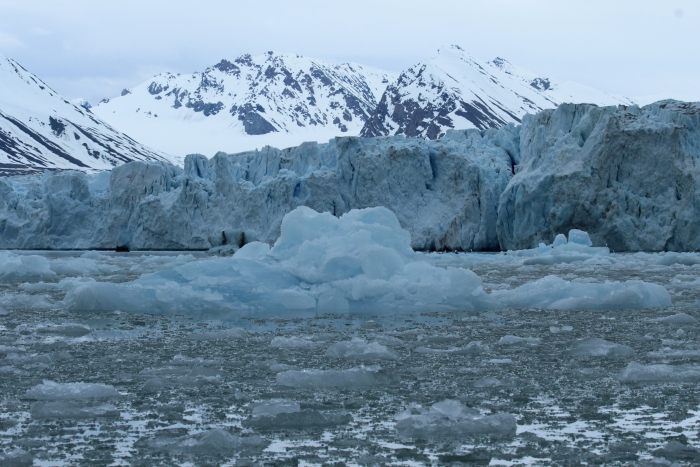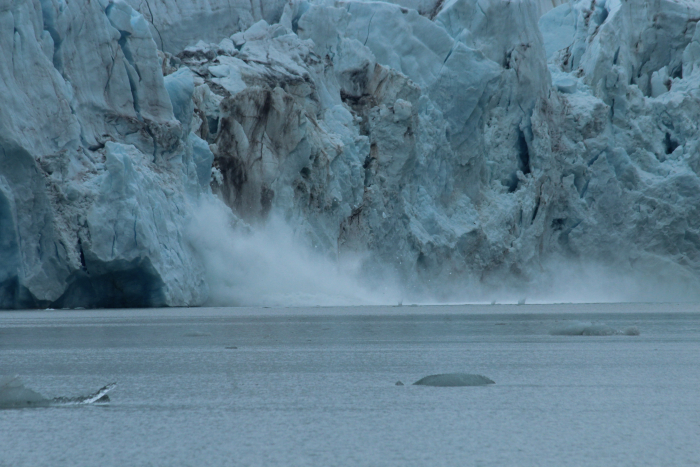Polar Ice: Going with the Floe
Most of my friends think it's weird that I love the Arctic and Antarctica because it's no big secret that I hate being cold. I hate it so much that I bought my car just for the seat heater - and I've been known to use it in the summer. I hate it so much, I wear knee-high socks to the gym. I hate it so much that I have heated toilet seats.
And yet, despite my aversion to cold, I am obsessed by the polar regions. When I first traveled to the Arctic, I thought it my favorite thing would be the animals. And yes, it was an absolute thrill to see polar bears and arctic foxes and walruses in the wild.

Ice! Ice! Baby!
The landscape in the far north is less about land and more about water in its different forms. The remarkable thing about being in the frozen North is the unexpected palette of color found in the ice. Snow and ice and water isn’t all white or clear - it’s blue... incredible shades of aquamarine and turquoise and cerulean. The color is dependent on the depth of the water or the consistency of the ice.
Snow crystals are delicate and airy, and air bubbles are what reflect visual light back out to what we can see. When all colors in the light spectrum are reflected, we see white. Water acts as a filter of lightwaves – under the water, longer wavelengths of light (red-orange-yellow) are absorbed, so things look blue.

Glaciers
Over a period of thousands of years, snow builds up and packs down, forming huge hunks of ice. When the pressure gets big enough, ice is squeezed through valleys, slowly flowing down in the form of glaciers.
In the case of glacial ice, the pressure of snow accumulation causes the layers below to compress, and eventually all the air bubbles are squeezed out leaving tightly packed H2O molecules. Up close, small pieces of this ice look crystal clear, but en masse, these huge chunks absorb the majority of visible light, only allowing shorter wavelengths to pass through. By the time the light reaches our eyes, only the shortest wavelengths – blue – are present.
Arguably my favorite place to be in the whole wide world is in the presence of a glacier. There's just something ineffable about seeing the sheer magnitude of a huge moving river of ice, hearing the clamor of sea life thriving in the rich waters around it, and feeling the cold katabatic wind as it sweeps down.
And when it calves... SWOON
While it is probably a bad sign that it is melting rapidly, the sights and sounds of a calving glacier are breathtaking and unreal - the thunder-like cracks of ice, the splash of a huge chunk crashing into the ocean, the echoes and roars through the valley aren't just seen and heard, but felt - deep down in your chest.
Last week, the British Air Force took video and photos of part of A68a, one of the world's largest ice floes. The parent A68, the size of Connecticut, broke off Antarctica's Larsen C ice shelf in 2017 and has subsequently fractured into smaller pieces - smaller being a relative term. At around 93 miles long and 30 miles wide, A68a can only be photographed in full using satellite imagery. But the European Space Agency IS using a satellite, namely Sentinel-1, to track it, and what they are seeing could have serious consequences.
In the last few weeks, A68a has been moving closer and closer to South Georgia, and scientists are worried that it may run aground on the island, disrupting the penguin and seal populations that live in the coastal waters. They won't be able to get to their feeding grounds with a giant block of ice in their way. If A68a does get stuck in the shallow waters, it could be there for up to 10 years.
But with luck, currents will move A68a northwest, where warmer waters and ocean waves will break it into smaller pieces.
One of the few occasions where we can hope that polar ice melts!
Things that make you go, "hmmmmm..."
What's the difference between an iceberg and an ice floe? Tune in next time for more about ice!



Comments